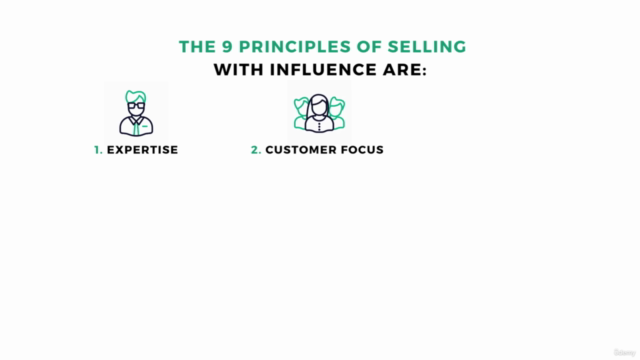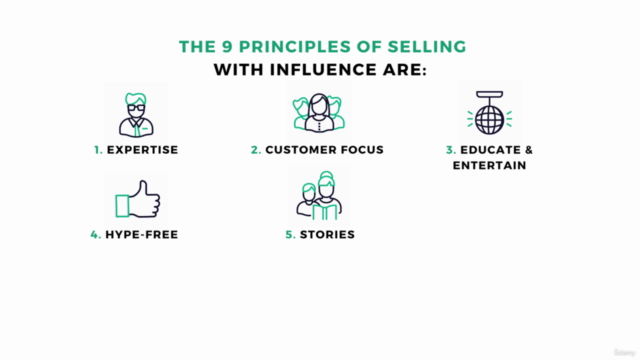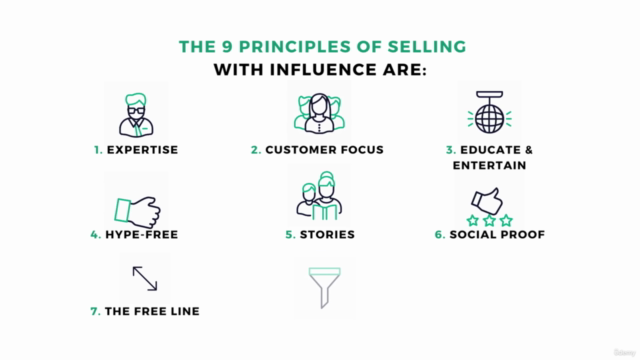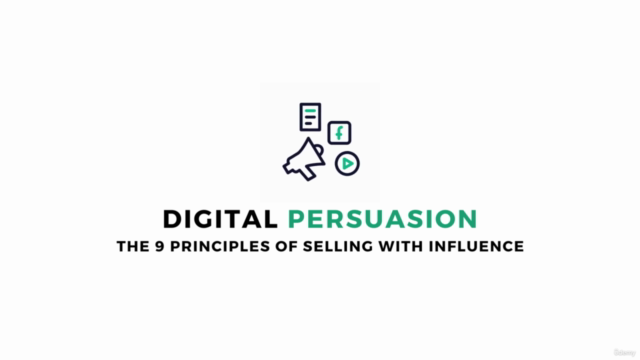Digital Persuasion - How To Influence People To Buy

Why take this course?
-
Reciprocity: You can start by offering a free sample, a discount code, or valuable content (like an eBook or webinar) to your audience. This will not only make them feel indebted to you but also build trust and rapport.
-
Commitment and Consistency: Encourage customers who have already made a small commitment (like signing up for your newsletter or downloading your free content) to take the next step, which could be purchasing a low-priced item or attending a free webinar. This builds on their initial commitment and nudges them towards greater involvement with your brand.
-
Social Proof: Showcase testimonials, user reviews, case studies, and endorsements from satisfied customers, influencers, or industry experts. This can be displayed on your website, social media channels, and marketing materials to establish credibility and encourage new visitors to convert into customers.
-
Authority: Establish yourself as an authority in your niche by sharing expert advice, insights, and knowledge. This could be through blogging, speaking at events, or being featured in industry publications. By positioning yourself as a go-to expert, you'll naturally attract more customers who are looking for trusted expertise.
-
Liking: Use social media to share personal stories, engage with your audience, and build a connection. People tend to buy from businesses they feel a personal connection with. Sharing your journey, values, and what your company stands for can foster a sense of liking among potential customers.
-
Scarcity: Implement limited-time offers or have a limited number of products available to create a sense of urgency. This can be done through flash sales, countdown timers on websites, or exclusive deals for early buyers. Just ensure that the scarcity is genuine and not misleading.
-
Lump Sum vs. Instalments: Offer payment plans or installment options to reduce the perceived barrier of a high price point. This can make expensive products or services more accessible and increase conversions, while still ensuring you get your full value over time.
-
Anchoring: Set a higher price for an item initially, then offer discounts or special deals. The initial price anchors the customer's perception of value, making the reduced price seem more attractive. Be transparent and fair with this technique to maintain trust.
-
Decoy Effect (Asymmetric Dominance): Offer two options where one is clearly not as attractive as the other two. This can make the second option (the one you really want to sell) appear more desirable in comparison. Use this carefully and ethically, focusing on how it genuinely benefits the customer.
-
Framing: Present your products or services in a way that highlights their benefits over potential downsides. Focus on the positive aspects of what you're offering and use language that conveys value effectively.
-
Peak-End Rule: Make sure that the end of a customer's interaction with your brand is positive, and highlight the most memorable or positive aspect of your product or service. This will help create a lasting impression that overshadows any potential negatives.
-
Repetition: Use repetition in your marketing messages without being monotonous. Repeat your unique selling proposition (USP) across various platforms to reinforce your message and ensure it sticks with your audience.
By incorporating these principles into your sales and marketing strategies, you can create compelling campaigns that resonate with your audience and encourage them to engage with your brand. Remember to always use persuasion techniques ethically, prioritizing the customer's interests and maintaining honesty and transparency in all your communications.
Course Gallery




Loading charts...